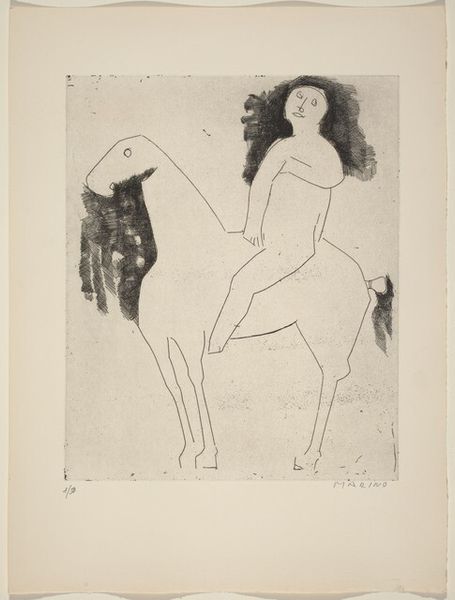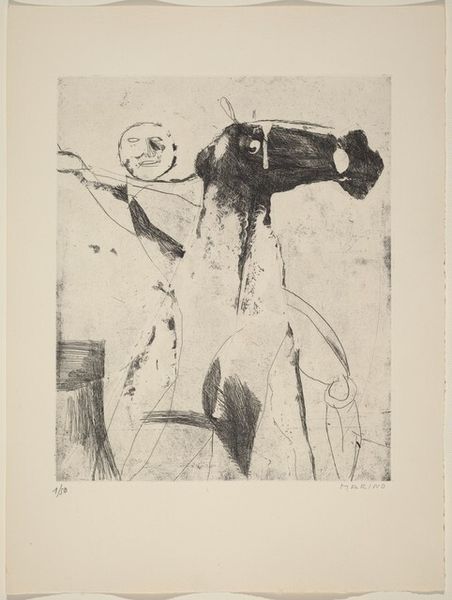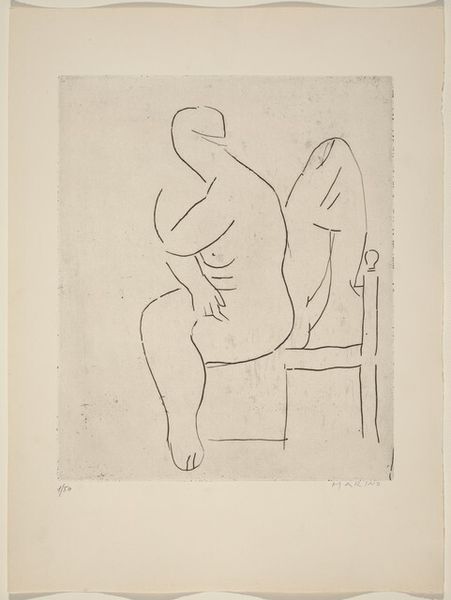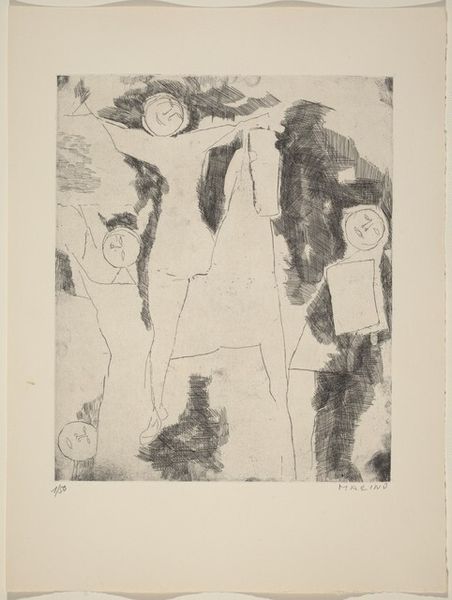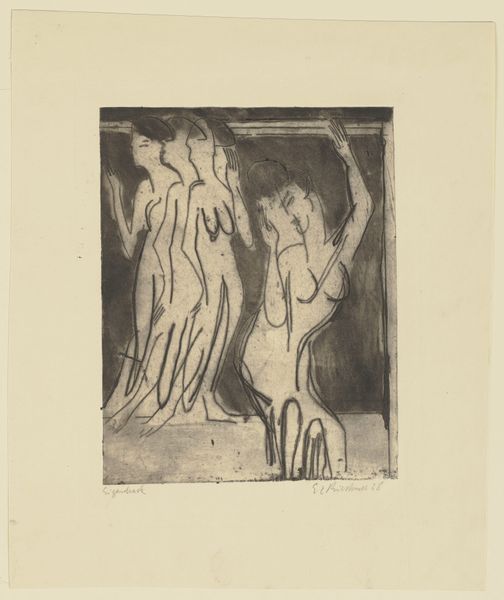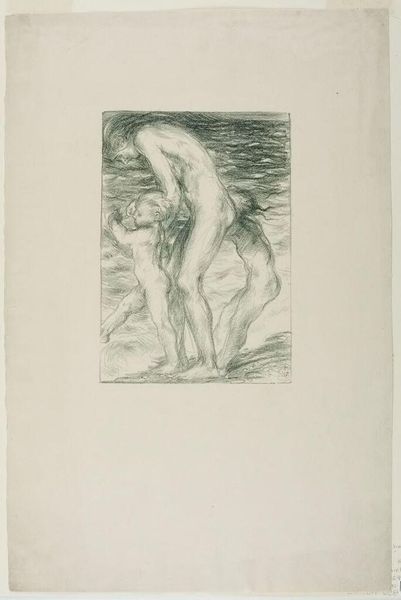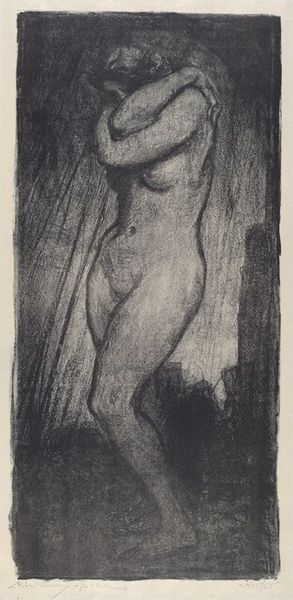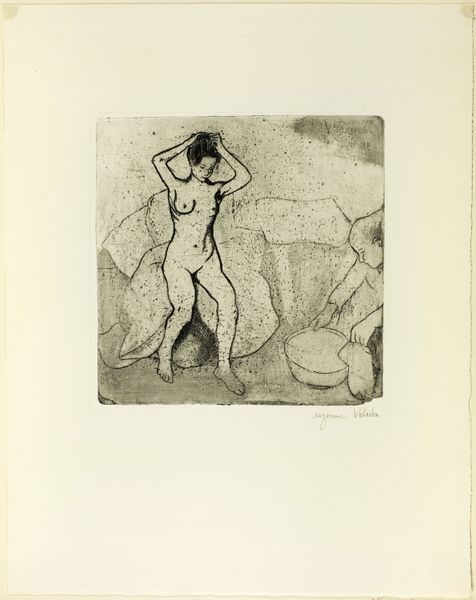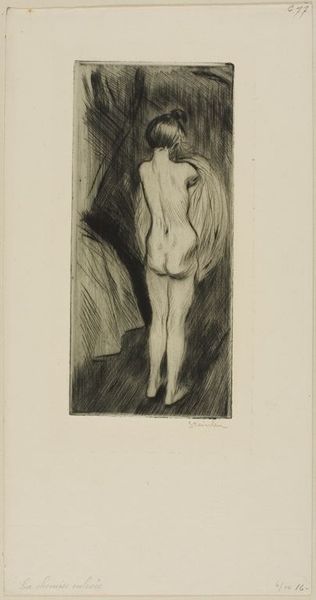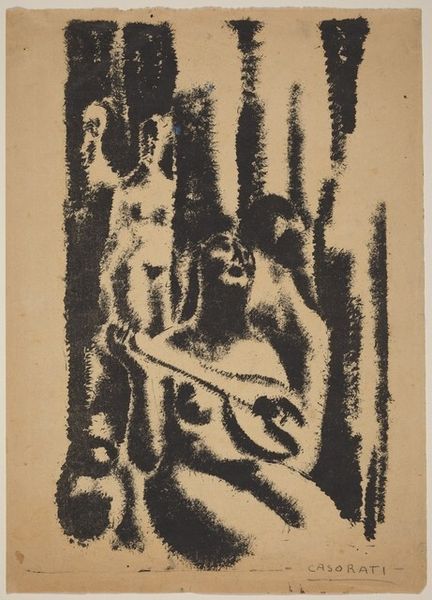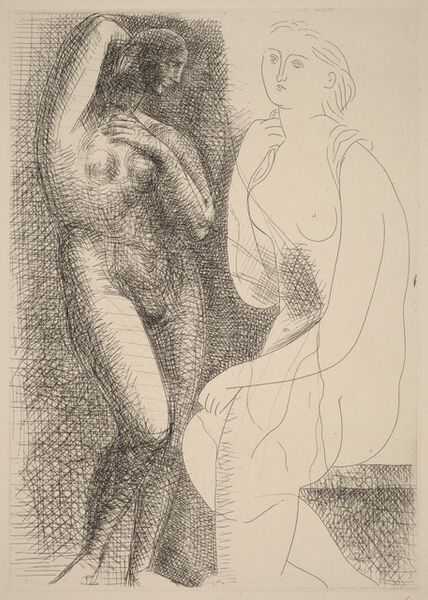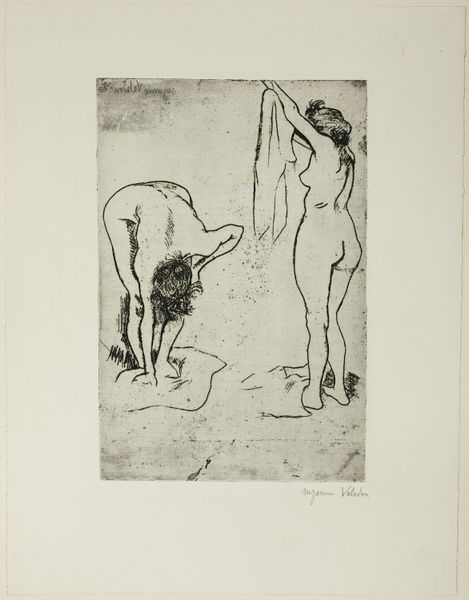
print, etching
#
ink drawing
# print
#
etching
#
figuration
#
nude
#
modernism
Dimensions: plate: 35.8 x 29.5 cm (14 1/8 x 11 5/8 in.) sheet: 51.8 x 38.7 cm (20 3/8 x 15 1/4 in.)
Copyright: National Gallery of Art: CC0 1.0
Editor: So this is "The Horseman's Dream," an etching by Marino Marini from 1960. The stark contrast of light and dark gives it a really dramatic, almost unsettling feel. What do you make of the relationship between the horse and rider here? Curator: The horse and rider motif, especially in Marini's work, becomes a powerful symbol when viewed through the lens of post-war anxiety. It's not just a depiction of man and beast, but an exploration of dominance, control, and, often, the loss of it. Look at how the rider is almost overwhelmed by the horse – does that suggest to you a commentary on the individual's power in the face of overwhelming historical forces? Editor: I hadn't thought of it that way, but that makes sense. It feels like the horse is almost rebelling, or at least, not fully under control. Is there something about the gendered aspect here? Are the nudes important? Curator: Absolutely. The nude figures are crucial to interpreting this etching through a feminist lens. Consider the power dynamics being presented: who is controlling the narrative? Whose bodies are being presented for the viewer's gaze? The potential lack of control you see in the horse *could* represent a broader interrogation of traditional, patriarchal structures, with the nude figures embodying vulnerability or even resistance. But does the horse *need* a rider? Can we interpret the nude beside the horse as part of a trio - can we go so far as to ask questions of bodily autonomy? Editor: That’s a really compelling reading. I see so many possibilities, how can this be so heavily politicized by an artist I thought I understood? Curator: This isn’t about finding *the* correct reading. Instead, it is finding connections between historical and philosophical underpinnings. Understanding the societal implications helps broaden our interpretations and can promote dialogue around art. Editor: I will definitely view the etching, and the other art around it, through a different lens from now on. Thanks! Curator: It’s just one possible avenue, enjoy!
Comments
No comments
Be the first to comment and join the conversation on the ultimate creative platform.

